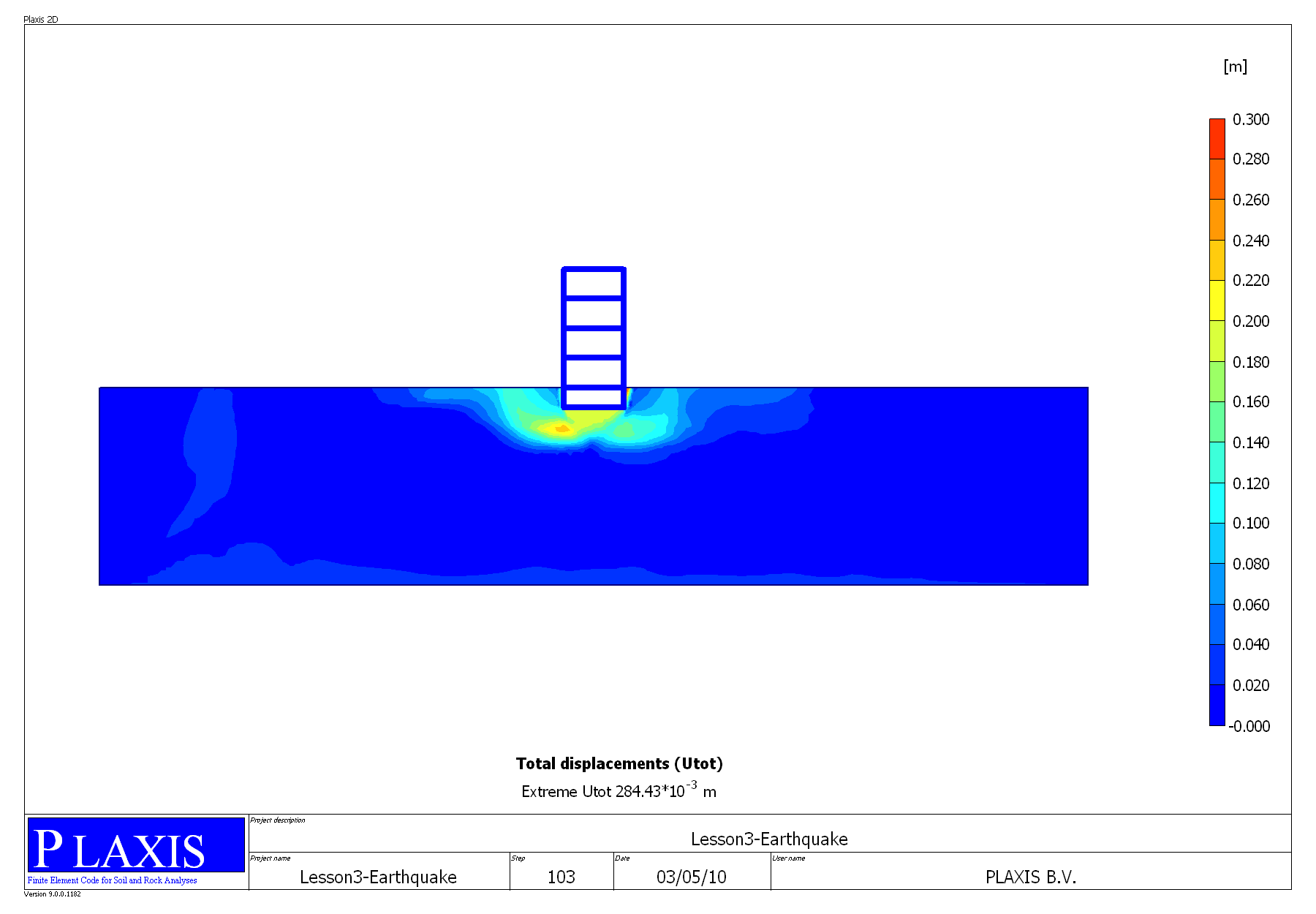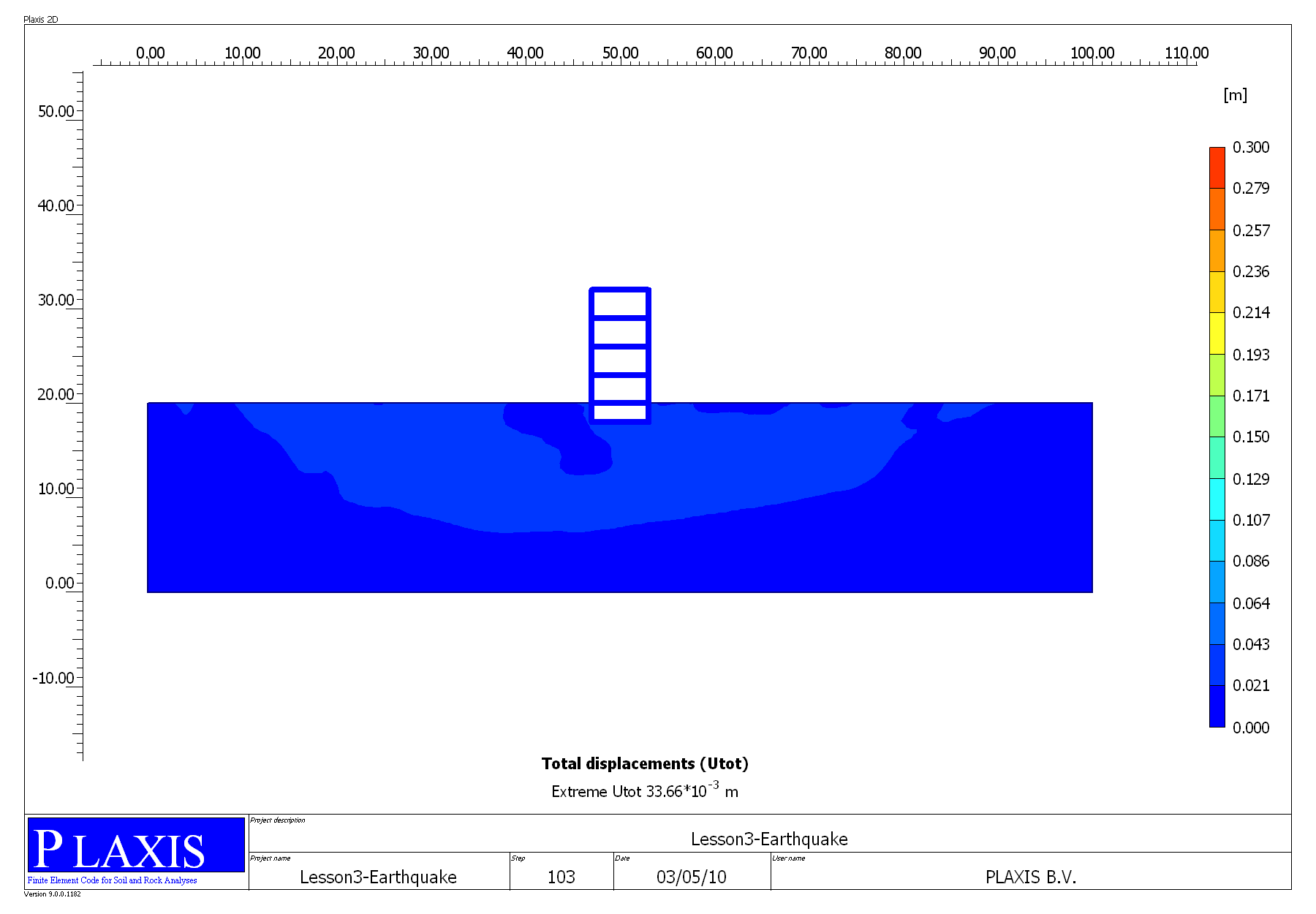Next: TROUBLESHOOTING Up: EXAMPLES Previous: NATM tunnel in clay
This example demonstrates capabilities of a hypoplastic model in dynamic analysis of the earthquake impact on existing infrastructure. A real accelerogram of an earthquake recorded by USGS in 1989 is used for the analysis.
The building consists of 4 floors and a basement. It is 6 m wide and 25 m high.
The subsoil consists of a sand with water level reaching the surface.
The soil behaviour during the earthquake is considered as undrained. Two cases
were simulated. In one case, the soil is in a loose state (
![]() ), in the second
case the soil is in a dense state (
), in the second
case the soil is in a dense state (![]() is close to
is close to ![]() ). Hypoplastic model parameters
of the Hochstetten sand from Tab. 4.1 and the intergranular strain parameters from Tab. 4.2 are adopted.
). Hypoplastic model parameters
of the Hochstetten sand from Tab. 4.1 and the intergranular strain parameters from Tab. 4.2 are adopted.
Overall displacements of the top of the building are shown in Fig. 5.8. The soil response to the earthquake depends significantly on the soil state. The loose soil liquefies after 3-4 s of the earthquake, leading to the failure. The analysis cannot continue and fails. The displacements are much lower in the case of dense soil. Although some displacements occur also in this case, the soil retains some bearing capacity sufficient to overcome the failure.
Figure 5.9 shows total displacements after approx. 4 s of earthquake for the loose soil case, whereas Figure 5.10 shows the displacements at the same time (and in the same scale) for the dense soil. The figures indicate foundation failure for the loose soil case and relatively low displacements for the dense soil case.


|
David Masin 2017-09-12